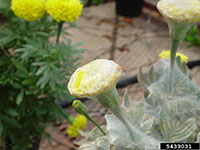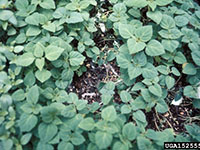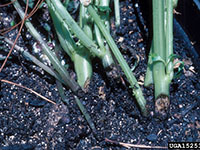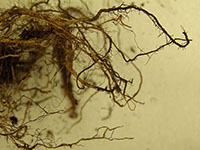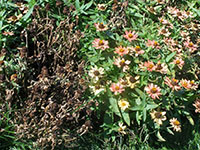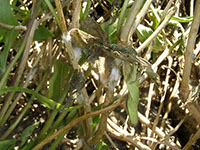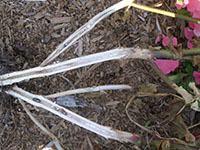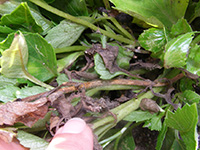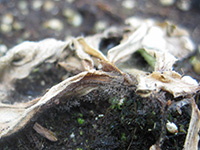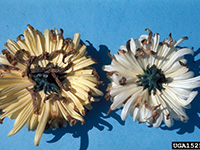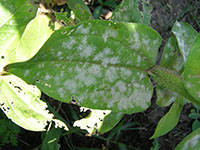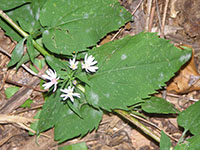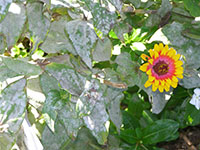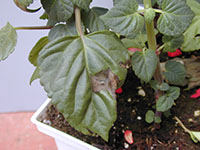Extension > Garden > Diagnose a problem > What's wrong with my plant? > Annuals and Perennials > Salvia > Discolored leaves
Salvia > Leaves > Discolored leaves
1 of 6
Spider mites - Two-spotted spider mite
Tetranychus urticae
- Active during summer, particularly abundant during hot, dry weather
- Pale stippling appears on the upper leaf surface
- Leaves are discolored off green to whitish, yellowish, or bronze
- Premature leaf drop can occur
- Visible webbing occurs on infected leaves when populations are high
- Adults are tiny (1/50th inch long) and oval, greenish or yellowish with a dark spot on either side of the body
- More information on Spider mites
2 of 6
Root rot
Rhizoctonia solani and Pythium spp.
- Leaves turn yellow and wilt
- Plants are stunted
- The base of the stem may turn brown and crack
- Roots have brown sunken areas and lack root hairs
- The outer root tissue may be easily removed leaving behind thin, stringy root cores
- Disease common in cool, wet soil with poor drainage
- Lab test necessary to distinguish between Rhizoctonia and Pythium Root Rot
- More information on Pythium root rot
- More information on Rhizoctonia root rot
3 of 6
White Mold
Sclerotinia sclerotiorum
- Entire plant or single branch wilts, leaves turn brown and die
- Wilted stems are discolored, tan to off-white
- Fluffy, white cotton-like fungal growth may been seen on infected plants when humidity is high
- Round to irregular hard black fungal structures ranging in size from 1/16 to ½ inch can be found clinging to the outside an infected stem or embedded inside the dead stem
- More information on white mold
4 of 6
Gray Mold
Botrytis cinerea
- Irregular brown spots on leaves
- Brown blossoms or petals; flowers drop off prematurely
- Gray fuzzy mold develops on rotted tissue under humid conditions
- Disease develops during cool, wet weather
- More information on Gray mold
5 of 6
Powdery Mildew
Golovinomyces (syn. Erysiphe) spp.
- Powdery, fluffy white spots and blotches on leaves, stems, and flower parts
- Tiny black round spheres may be visible within white spots late in the season
- Spots typically start on lower leaves but can spread to cover the entire plant
- Severely infected leaves may be completely covered in white or grayish white fungi
- In some cases, leaves become curled or twisted or turn yellow due to the infection
- More information on Powdery mildew
6 of 6
Downy Mildew
Pernospora lamii
- Plants become yellow in color and stunted
- Large brown angular blotches may appear on leaves
- Leaves may curl slightly downward
- Grayish brown to purplish fungal growth can be found on underside of leaves in humid conditions
- Infected leaves prematurely drop from the plant leaving a barren stalk with few leaves
- Cool, wet weather favors disease
- More information on Downey mildew




